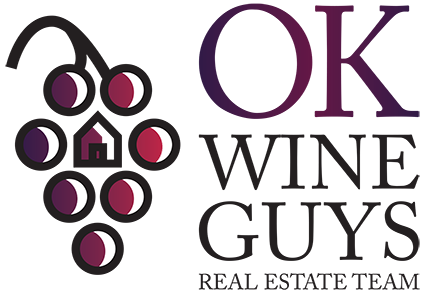When it comes to recognizing your costs of production, timing is everything When people ask me what I do for a living, I tell them that I work with interesting businesses (many of them estate wineries) in order to help them become even more successful. That sounds much better than saying “I’m a professional accountant”. I assume many of you are old enough to recall that classic Monty Python comedy sketch that sealed the reputations of accountants everywhere. I realize that most of the population considers accounting to be an excellent cure for insomnia – but this is my article and I’m going to write about it anyway.
I’m going to keep things simple, relevant and practical – so hang with me on this. Like most things in life, accounting can be distilled down to a relatively few fundamental principles. I’m not trying to make everyone an accountant (the world still needs lion tamers), but grasping a few of these fundamental concepts will make you a wiser business owner. One of these accounting basics is the matching principle. Simply put, the matching principle says that the cost to acquire or produce an item should be recognized in the same fiscal period as the revenue from selling that item – not before and not after.
Back in 1979, Paul Masson Wine spokesman Orson Welles famously declared “we will sell no wine before its time”. We accountants would add “ and we will recognize no expense until we sell the wine”. Who cares you ask (besides nerdy accountants)? Well, the Canada Revenue Agency for one. Unless specific rules in the Income Tax Act indicate otherwise, taxpayers are required to measure and report their income for a given tax year by following basic accounting principles like matching. Lenders and shareholders will also expect the annual financial statements to be prepared in accordance with the accounting rules – known formally as Accounting Standards for Private Enterprises (ASPE). So even if you are okay with looking at an income statement that ignores inventory throughout the year, you are still going to need to properly adjust your inventory and cost of sales at year end when you finalize your reporting. And these year-end adjustments can often be pretty significant to your bottom line. The best way to illustrate how improper matching can affect the operating results of an estate winery is with a simple example: ABC Estate Winery makes only red wine, which it sells for $25 per bottle. In 2015, ABC sold 10,000 cases – 5,000 cases from the 2013 vintage, 3,000 cases from the 2012 vintage and 2,000 cases from 2011.
In 2015, ABC had production costs of $1.4 million and all other expenses totalled $1.2 million. Production costs include the cost of farming the 2015 grape crop plus cellar costs to finish and bottle previous years’ vintages. Let’s also assume the following cost per bottle to produce (vineyard and cellar costs) the 2011 through 2013 vintages: 2013 $13.25 2012 $13.75 2011 $12.75 In preparing their financial statements, many smaller wineries ignore the matching principle. That’s understandable – calculating a cost of production for each vintage or even each product can be a complex proposition.
That’s especially true when you consider that the time to grow the grapes, produce, finish and bottle the wine spans parts of at least two and often as many as four or five fiscal years. If ABC ignored proper matching of revenues and expenses, their simplified income statement for 2015 would look like this: Revenue 10,000 cases x 12 x $25/bottle $3,000,000 Cost of sales $1,400,000 Gross profit $1,600,000 Other expenses $1,200,000 Net income $ 400,000 But consider what we have done here. We have expensed the costs associated with producing wine we haven’t sold yet against the revenue from the sale of wine we produced in previous years. It simply doesn’t make sense to measure annual net income in this way, unless the cost to produce a bottle of wine never changes. That would be great if it were true, but it’s just not reality. Now let’s say ABC’s heroic accountants come in to do their work after the end of the year and recalculate the 2015 cost of sales by using the actual cost to produce the wine according to vintage year: Revenue 10,000 cases x 12 x $25/bottle $3,000,000 Cost of sales 5,000 cases x 12 x $13.25/bottle $795,000 3,000 cases x 12 x $13.75/bottle $495,000 2,000 cases x 12 x $12.75/bottle $306,000 $1,596,000 Gross profit $1,404,000 Other expenses $1,200,000 Net income $ 204,000 ABC is still profitable, but once you correct the distortion created by the incorrect accounting during the year, it’s clear that the profit is not as large as management might have been led to believe by looking at the internally-prepared statement.
The difference in this example is $196,000, which changes the net profit margin from 13.3% to 6.8%. Why the difference between these two calculations of net income? If we assume that ABC produced 10,000 cases in 2015, that would equate to $11.67 per bottle ($1.4 million / 10,000 cases/ 12 bottles per case). Now that’s a bit of a “rough and ready” calculation since the $1.4 million of 2015 costs is actually a combination of the cost of farming the 2015 grape crop plus cellar costs to finish and bottle previous years’ vintages. It’s good enough, however, to highlight the fact that production costs in 2015 are significantly lower than in previous years. But remember the wine we are selling this year was produced in previous years when production costs were higher. Deducting the current year costs now, before the related wine is finished and sold has the effect of overstating net income by a significant amount. Now, ABC will eventually get the benefit of these lower costs in terms of higher gross profit, but not until the 2015 vintage wine is finished and sold in future years. To understanding the matching principle think of a simple retail operation like a wine store. The wine store doesn’t expense the wine it buys from your winery right away. It becomes an asset called inventory until it is sold.
At the same time the sale is recorded, the cost of the item sold is removed from inventory and expensed. The principle is the same for your winery, except instead of buying the inventory, you are manufacturing it. It’s not an expense until you sell it. Until then, it’s an asset. So you can leave the heavy lifting to the heroic accountants when they come in to do their work after year-end, but a basic understanding of the matching principle never hurts for any winery owner. Now that we improved your financial literacy with a short accounting lesson, you can sleep well. SOURCE: Geoff McIntyre, accountant – MNP

